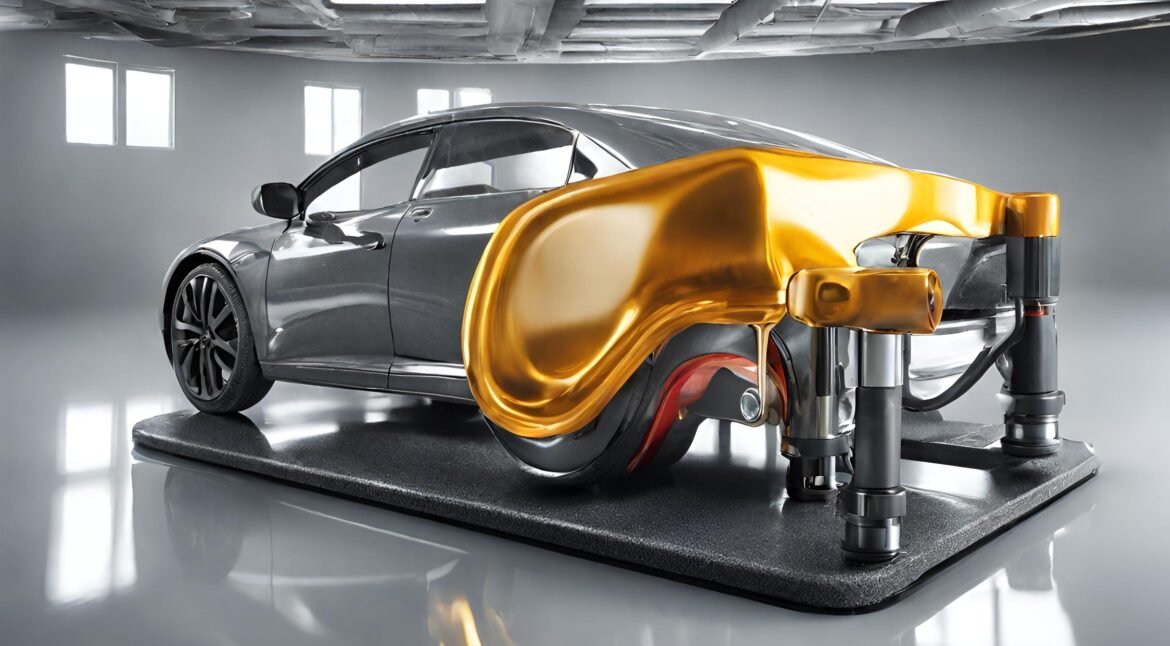How to Choose Best Automotive Grease for Extreme Conditions
In the automotive world, selecting the right grease is crucial, especially when dealing with extreme conditions. Whether it’s for off-road adventures, high-performance vehicles, or heavy-duty machinery, the choice of grease can significantly impact performance and longevity. Here we will guide you through the process of choosing the best automotive grease for extreme conditions, ensuring your vehicle or equipment operates smoothly and efficiently.
What is Automotive Grease?
Automotive grease is a semi-solid lubricant composed of base oils, thickeners, and additives. It is designed to stay in place and provide consistent lubrication, reducing friction and wear between moving parts. Unlike liquid lubricants, grease does not flow away from the application area, making it ideal for components that require long-lasting lubrication.
Components of Grease
Base Oils: These are typically mineral or synthetic base oils that provide the primary lubricating properties.
Thickeners: Substances like lithium, calcium, or complex soaps that give grease its semi-solid structure.
Additives: Chemicals added to enhance performance characteristics, such as anti-wear agents, corrosion inhibitors, and extreme pressure (EP) additives.
Importance of Choosing the Right Grease
Factors to Consider
Temperature Range: The grease must withstand the operating temperature range of the application without breaking down.
Load Carrying Capacity: High loads require grease with extreme pressure additives to prevent metal-to-metal contact.
Water Resistance: For applications exposed to water or moisture, a water-resistant grease is essential to prevent washout and corrosion.
Compatibility with Materials: The grease should be compatible with the materials of the components it lubricates to avoid chemical reactions.
Types of Automotive Grease

Lithium Grease
Lithium grease is one of the most common types used in automotive applications. It offers excellent performance across a wide temperature range and is resistant to water. It’s suitable for general-purpose use but may not be ideal for extremely high temperatures or heavy loads.
Calcium Sulfonate Grease
Calcium sulfonate grease is known for its superior water resistance and high load-carrying capacity. It performs well in both high and low temperatures, making it suitable for extreme conditions. It’s often used in heavy-duty applications and off-road vehicles.
Polyurea Grease
Polyurea grease is notable for its high-temperature stability and long service life. It doesn’t contain metal soaps, making it ideal for electric motors and other high-speed applications. However, it may not be the best choice for high-load scenarios.
Synthetic Grease
Synthetic grease, made from synthetic base oils, offers exceptional performance in extreme temperatures and conditions. It provides superior protection against wear, oxidation, and corrosion. It’s suitable for high-performance and heavy-duty applications but can be more expensive than conventional greases.
Extreme Conditions and Grease Performance
High Temperatures
For applications subjected to high temperatures, such as wheel bearings or high-speed machinery, the grease must maintain its lubricating properties without breaking down. High-temperature greases often contain synthetic base oils and complex thickeners like lithium complex or polyurea.
Low Temperatures
In cold environments, grease must remain pliable to ensure effective lubrication. Low-temperature greases are designed to prevent hardening, which can lead to increased wear and potential failure of components.
Heavy Loads
Extreme pressure additives are crucial for applications involving heavy loads, such as industrial machinery or off-road vehicles. These additives form a protective film on metal surfaces, preventing metal-to-metal contact and reducing wear.
Water and Moisture
Water-resistant greases are essential for components exposed to water, such as boat trailers or off-road vehicles. Calcium sulfonate and aluminum complex greases are known for their excellent water resistance properties.
How to Select the Best Grease

Step 1: Identify Application Requirements
Determine the specific requirements of your application, including temperature range, load conditions, and exposure to water or contaminants.
Step 2: Consult Manufacturer Recommendations
Refer to the equipment or vehicle manufacturer’s recommendations for grease specifications. This information is typically found in the owner’s manual or maintenance guide.
Step 3: Evaluate Grease Properties
Compare the properties of different greases, including their base oils, thickeners, and additives. Look for greases that meet or exceed the requirements of your application.
Step 4: Conduct Field Tests
If possible, conduct field tests to evaluate the performance of the grease under actual operating conditions. This can provide valuable insights into its suitability for your needs.
Final Thoughts
Choosing the best automotive grease for extreme conditions involves understanding the specific requirements of your application and evaluating the properties of different greases. By considering factors like temperature range, load-carrying capacity, and water resistance, you can select a grease that provides optimal performance and protection for your vehicle or equipment. Whether you’re dealing with high temperatures, heavy loads, or harsh environments, the right grease can make a significant difference in maintaining the efficiency and longevity of your automotive components.
Remember to consult manufacturer recommendations and, if possible, conduct field tests to ensure the grease meets your needs. With the right choice of automotive grease, you can ensure smooth operation and reduced wear, even in the most extreme conditions.

